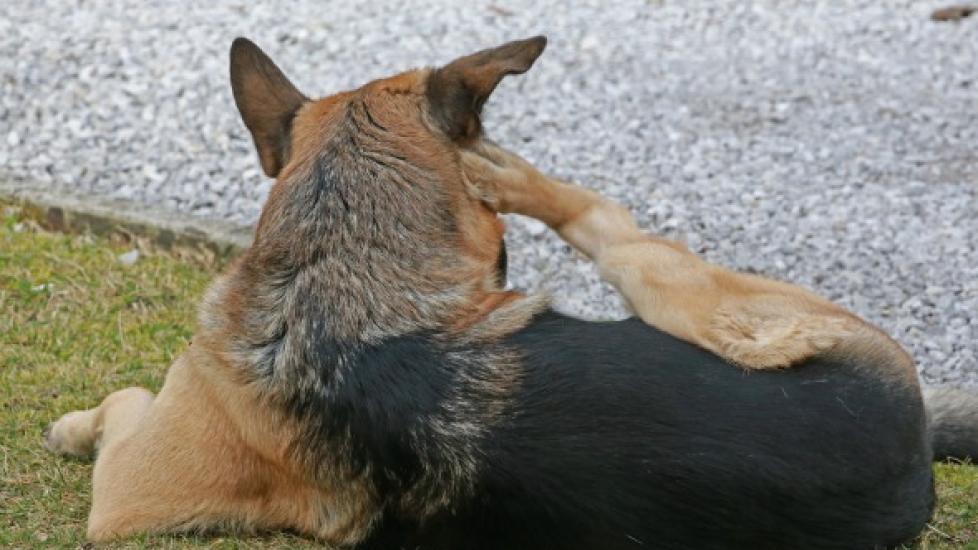Title: Unraveling the Mysteries of 'Mad Itch': Understanding and Managing Canine Pseudorabies Virus Infection
Introduction:
Nestled within the realm of canine health, there exists a condition known as “mad itch” or pseudorabies virus (PRV) infection. This infectious disease, once common among swine but now rare thanks to vaccination programs, occasionally affects dogs and other species, causing a range of symptoms that mimic those seen with true rabies. Let’s delve into this fascinating yet often overlooked affliction, exploring its origins, clinical presentation, diagnosis, treatment options, and preventive measures.
Understanding PRV: A Historical Perspective
Pseudorabies is caused by the Suid herpesvirus 1 (SuHV-1), which primarily infects pigs. Historically, PRV was widespread across pig populations worldwide, leading to significant economic losses due to mortality rates and decreased productivity. However, through systematic immunization efforts, many countries have eradicated the disease from their livestock. Unfortunately, PRV has been reported sporadically in dogs, cats, wild boars, and even humans under certain circumstances.
Clinical Signs and Symptoms
In affected dogs, PRV typically manifests as a febrile illness characterized by lethargy, anorexia, nasal discharge, and, most notably, intense pruritus—hence the term “mad itch.” The scratching can be so severe that it leads to hair loss, secondary skin infections, and self-inflicted wounds. Neurological signs such as convulsions may also occur, particularly in puppies who are more susceptible to central nervous system involvement.
Diagnosis and Testing
The initial suspicion of PRV infection should be based on a thorough history and physical examination. Blood tests may reveal an elevated white blood cell count indicative of inflammation or infection. Definitive confirmation requires laboratory testing, including PCR assays to detect viral DNA in samples collected from various bodily fluids like cerebrospinal fluid or conjunctival swabs. Serology can help determine if an animal has been exposed to the virus in the past.
Treatment and Management Strategies
Once diagnosed, prompt treatment is crucial to reduce morbidity and prevent spread. Supportive care involves ensuring adequate hydration, managing pain, and addressing any secondary bacterial infections. Antiviral medications may be used off-label in some cases, although their efficacy against PRV is not well established. Isolation protocols must be implemented to avoid contagion, especially for multi-pet households and breeding facilities where outbreaks could be catastrophic.
Prevention: Vaccination and Biosecurity Measures
The primary defense against PRV lies in robust vaccination practices targeting at-risk populations, mainly swine. However, since PRV infections in companion animals are relatively uncommon, routine vaccinations are generally not recommended unless specific risk factors exist, such as contact with infected wildlife or proximity to infected farm environments. In these scenarios, consulting with a veterinarian about potential prophylactic measures would be wise. Additionally, maintaining good biosecurity standards, including regular sanitation and limiting exposure to unfamiliar animals, can contribute to overall pet health and safety.
Conclusion:
Canine pseudorabies virus infection, though infrequent, remains a concern for veterinary professionals and dog owners alike. By understanding its historical context, recognizing the diverse array of symptoms, employing accurate diagnostic methods, implementing effective treatments, and taking proactive steps towards prevention, we can ensure our beloved pets maintain optimal health while contributing to the global control of this ancient pathogen. As always, open communication between pet guardians and their trusted healthcare providers is key to navigating the complex world of animal wellness.
